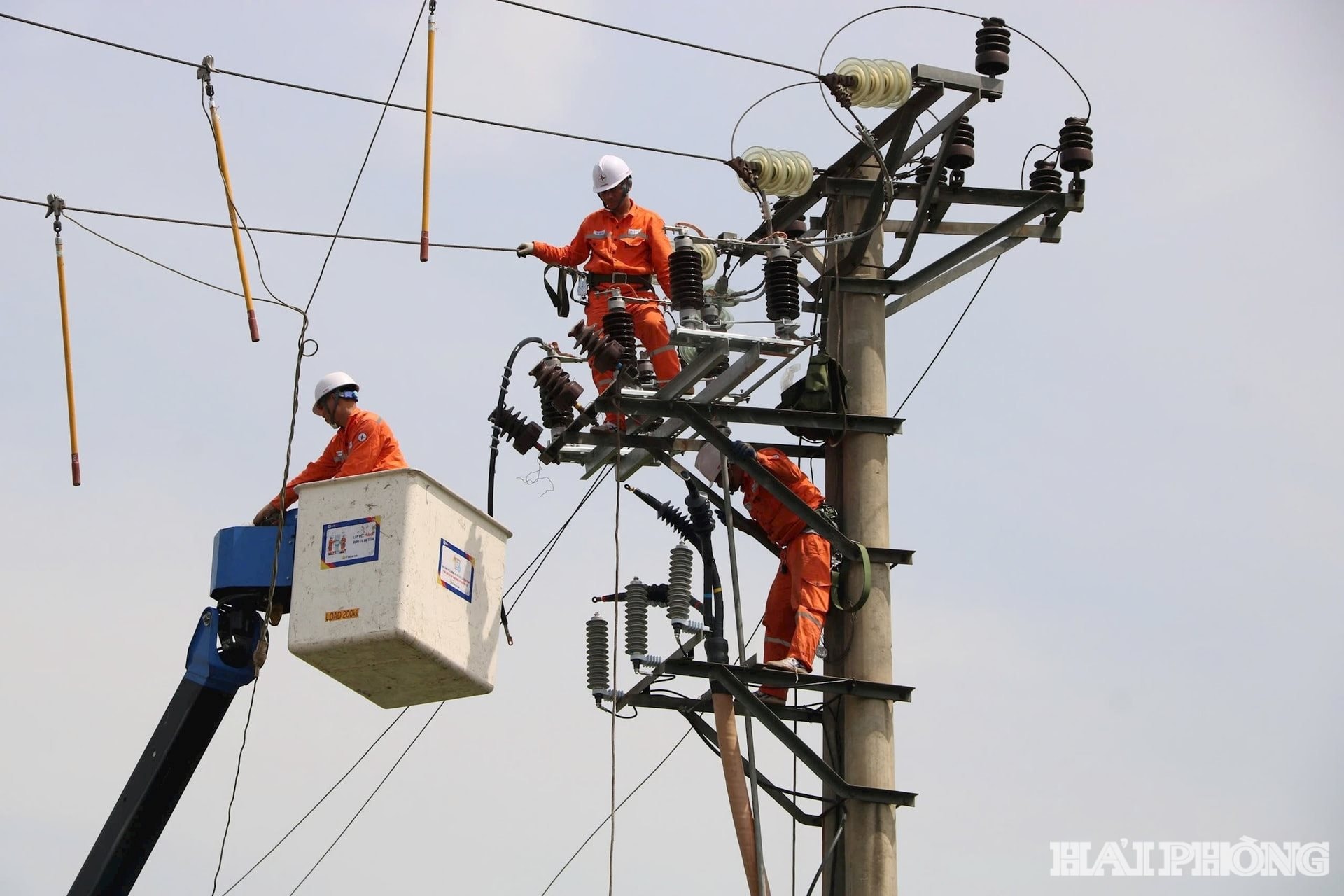
The roadmap for piloting two-component electricity prices is outlined by the Ministry of Industry and Trade in the draft Decision that is being consulted.
Vietnam is applying a single-component price, which means payment based on output used. This calculation method is considered not to accurately reflect the costs incurred by the electricity industry (asset depreciation, power lines, transformer stations, etc.) for each customer. With a two-component price, including calculation based on output consumed and registered capacity, customers will pay separately for each kW of capacity they register monthly with the supplier. When not in use, they still have to pay this cost, instead of the electricity industry bearing and recovering it through price adjustments as is currently the case.
According to the draft decision, the Ministry of Industry and Trade proposes to apply this price mechanism in 4 phases.
Phase 1, from now until the middle of next year, this pricing mechanism will be piloted with manufacturing enterprises that are directly trading electricity between renewable energy generators and large electricity users (production and business).
At this stage, the Ministry of Industry and Trade surveys and collects all measurement data such as electricity output, usage characteristics, etc. From there, they research and propose a calculation method suitable for input parameters, and the customer group will be officially tested.
Phase 2, January-June 2026, communication and paper-based pilot. Specifically, the authorities will issue parallel invoices (without actual payment) to all customers participating in the pilot, with instructions on the two-component retail electricity price.
In phase 3, the two-component pricing mechanism will be officially tested for one year (July 2026-July 2027). From there, the management agency will monitor and evaluate the level of change in demand, electricity usage behavior, customer response, electricity sales revenue, as well as research and adjust the components in the price structure...
In phase 4, from August 2027, the Ministry of Industry and Trade will evaluate and expand the application of two-component electricity prices to customer groups.
According to the draft, EVN is responsible for developing, calculating and proposing two-component retail electricity prices to submit to the Ministry of Industry and Trade and implement according to the above roadmap.
In Resolution 70 of the Politburo on ensuring national energy security, the Politburo requested to set a target for reforming the price mechanism, moving towards eliminating cross-subsidies between customer groups and regions. To do this, Mr. Nguyen Anh Tuan, General Director of Vietnam Electricity Group (EVN) said that Vietnam needs to soon apply a two-component electricity price mechanism.
Previously, in the EVN's two-component electricity price project report in November 2024, the consulting unit proposed to pilot this mechanism from the beginning of this year. According to the consulting unit, the pilot can initially be applied to the group of customers producing and consuming large amounts of electricity, divided into 3 voltage levels including high voltage (from 110 kV and above), medium voltage (from 6 kV to below 110 kV and above) and low voltage (below 6 kV). In which, the capacity price (VND/kW/month) is expected to be calculated according to the voltage level, while the electricity price (VND/kWh) is applied according to normal - high - low peak hours.
In fact, reforming the electricity retail price mechanism needs to be considered at a time when Vietnam is transitioning to a market mechanism for electricity generation, wholesale and retail. However, applying a two-component price will affect customer groups and electricity users because the amount of money customers have to pay may increase or decrease compared to the current mechanism. Therefore, changing the electricity price calculation mechanism needs a suitable roadmap, along with communication to create consensus.
PV - VNNSource: https://baohaiphong.vn/de-xuat-thi-diem-gia-dien-hai-thanh-phan-tu-2026-520259.html






![[Photo] Prime Minister Pham Minh Chinh attends the groundbreaking ceremony of two key projects in Hai Phong city](https://vphoto.vietnam.vn/thumb/1200x675/vietnam/resource/IMAGE/2025/9/27/6adba56d5d94403093a074ac6496ec9d)


































































































Comment (0)